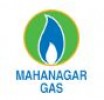

Mahanagar Gas




10+ Mahanagar Gas Interview Questions and Answers
Q1. What is difference between GTAW and TIG welding
GTAW and TIG welding are the same process, with GTAW being the technical term and TIG being the commonly used name.
GTAW stands for Gas Tungsten Arc Welding, while TIG stands for Tungsten Inert Gas welding.
Both processes use a non-consumable tungsten electrode to create an arc for welding.
GTAW and TIG welding are often used interchangeably, with TIG being the more commonly used term in industries.
The main difference lies in the terminology, where GTAW is the technical name and...read more

Q2. GCR and inter distance between equipment of CNG station?
GCR stands for Gas Compression Ratio and inter distance refers to the spacing between equipment at a CNG station.
GCR is the ratio of the volume of gas before compression to the volume after compression.
Inter distance between equipment at a CNG station is important for safety and efficient operation.
For example, the inter distance between a compressor and a storage tank should be sufficient to allow for proper ventilation and maintenance.

Q3. Draw Mahanagar gas network diagram with pressure variation
A Mahanagar gas network diagram with pressure variation needs to be drawn for the Project Engineer interview.
The diagram should include all the pipelines and their respective pressure levels.
The pressure variation should be shown using different colors or shades.
The diagram should also include the location of gas stations and regulators.
The pressure levels should be labeled and explained in a legend.
The diagram should be clear and easy to understand.

Q4. Explain Bank System in CNG cascade?
Bank system in CNG cascade involves multiple banks connected in a series to provide continuous supply of CNG.
CNG cascade system typically consists of multiple high-pressure cylinders connected in a series.
Each bank in the cascade is filled with CNG at different pressure levels.
The banks are interconnected to ensure a continuous and reliable supply of CNG.
Pressure regulators are used to control the flow of CNG between the banks.
Example: A CNG cascade system may have three bank...read more

Q5. Pipe diameter used in mahanagar gas
The pipe diameter used in Mahanagar Gas varies depending on the specific project requirements.
The pipe diameter used in Mahanagar Gas projects is determined based on factors such as gas flow rate, pressure, and distance.
For high-pressure gas transmission pipelines, larger diameter pipes are typically used to minimize pressure drop.
In distribution pipelines, smaller diameter pipes are used to supply gas to individual consumers.
The pipe diameter can range from a few inches to s...read more

Q6. Any types& Pipeline Engineering
Pipeline engineering involves designing, constructing, and maintaining pipelines for various industries such as oil and gas, water, and transportation.
Designing pipelines to transport fluids or gases efficiently
Constructing pipelines using materials like steel, plastic, or composite materials
Maintaining pipelines to prevent leaks and ensure safety
Types of pipelines include transmission pipelines, distribution pipelines, and gathering pipelines

Q7. Applicable standards for CGD
Applicable standards for CGD include ISO 9001, Six Sigma, and Lean principles.
ISO 9001: Quality management system standards
Six Sigma: Process improvement methodology
Lean principles: Eliminating waste and improving efficiency

Q8. What is risk and hazard
Risk is the likelihood of harm or loss, while hazard is the potential source of harm or danger.
Risk refers to the probability of an event occurring and the potential consequences of that event.
Hazard is anything that has the potential to cause harm, such as chemicals, machinery, or natural disasters.
Identifying and managing risks and hazards is important in ensuring safety and preventing accidents.
Examples of hazards include fire, explosions, falls, and exposure to toxic subs...read more


Q9. Types of Compressor?
Types of compressors include reciprocating, rotary, screw, and centrifugal compressors.
Reciprocating compressors use pistons to compress air.
Rotary compressors use rotating vanes or screws to compress air.
Screw compressors use intermeshing screws to compress air.
Centrifugal compressors use a rotating impeller to compress air.
Examples: Ingersoll Rand reciprocating compressor, Atlas Copco rotary compressor, Gardner Denver screw compressor, and GE centrifugal compressor.

Q10. Methane chemical composition
Methane is a chemical compound with the molecular formula CH4.
Methane is the simplest hydrocarbon.
It is a colorless, odorless gas.
It is highly flammable and burns with a blue flame.
Methane is the main component of natural gas.
It is produced naturally by anaerobic digestion of organic matter.
Methane is used as a fuel for heating and cooking.
It is also used as a feedstock for the production of chemicals such as methanol and acetic acid.

Q11. Hydraulic test and their formula
Hydraulic tests are used to check the strength and integrity of pipes and vessels under pressure.
Hydrostatic test is a common type of hydraulic test used to check for leaks and structural integrity.
Formula for hydrostatic test pressure is P = 2St/D, where P is pressure, S is stress, t is wall thickness, and D is diameter.
Another type of hydraulic test is pneumatic test, which uses air or gas instead of liquid.
Formula for pneumatic test pressure is P = 2St/D x K, where K is a ...read more

Q12. Liquid and nitrogen gas difference
Liquid and nitrogen gas differ in their physical state and boiling points.
Liquid nitrogen is nitrogen in a liquid state at an extremely low temperature of -196°C.
Nitrogen gas is a colorless, odorless gas that makes up 78% of the Earth's atmosphere.
Liquid nitrogen is commonly used in cryogenics, food preservation, and medical procedures.
Nitrogen gas is used in various industries such as electronics, food packaging, and metal fabrication.
The boiling point of liquid nitrogen is ...read more

Q13. What was safety standards used in natural gas distribution
Safety standards for natural gas distribution include regulations from federal and state agencies, industry standards, and best practices.
Federal and state agencies such as the Occupational Safety and Health Administration (OSHA) and the Pipeline and Hazardous Materials Safety Administration (PHMSA) set regulations for natural gas distribution safety.
Industry standards such as the American Gas Association (AGA) and the National Fire Protection Association (NFPA) provide guide...read more

Q14. Rule and government requirements to safety of human
Safety rules and government requirements are in place to protect human life and prevent accidents.
Safety regulations are enforced by government agencies such as OSHA and EPA
Employers are required to provide a safe workplace and train employees on safety procedures
Safety equipment such as personal protective equipment (PPE) must be provided and used
Emergency response plans must be in place and regularly practiced
Violations of safety regulations can result in fines, penalties, ...read more

Q15. What is arbitration

Q16. MANUAL DRAFTING OF A STAIR





Top HR Questions asked in Mahanagar Gas
Interview Process at Mahanagar Gas

Top Interview Questions from Similar Companies









Reviews
Interviews
Salaries
Users/Month












